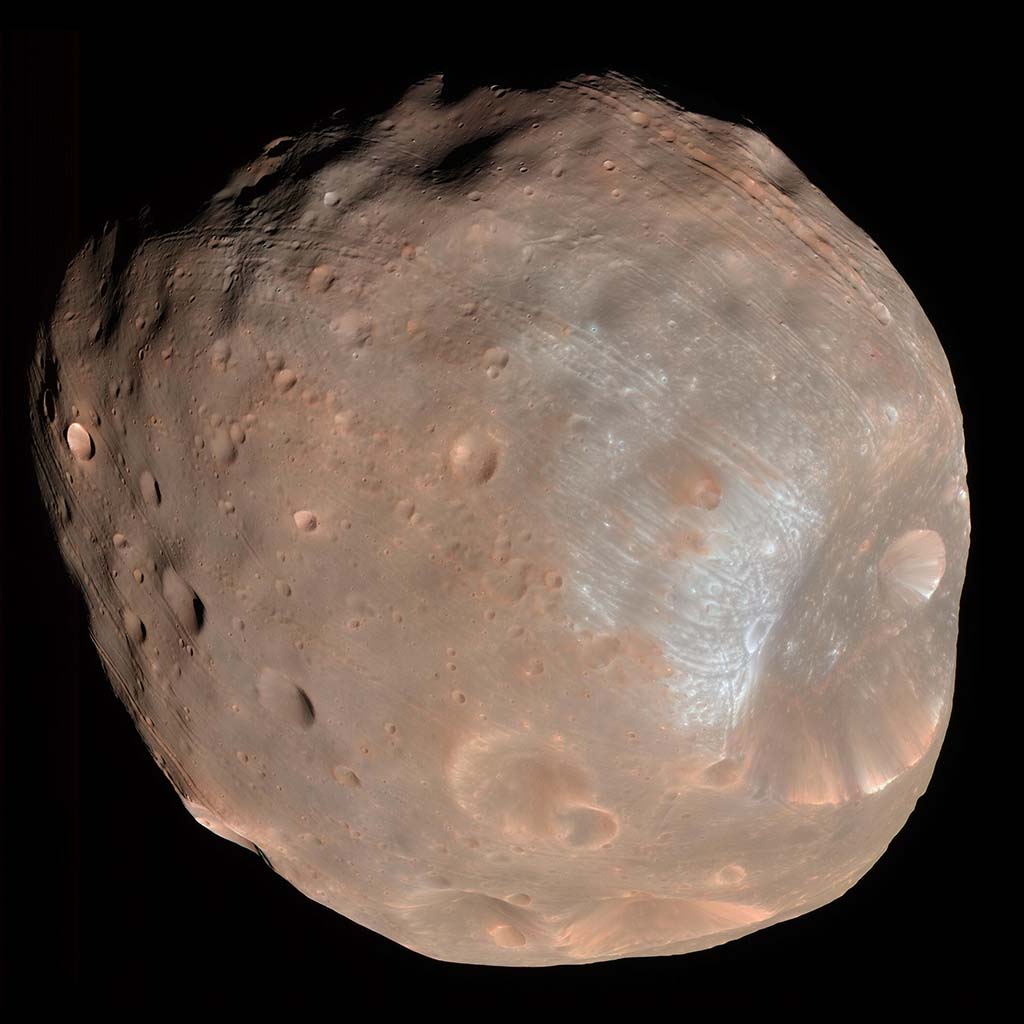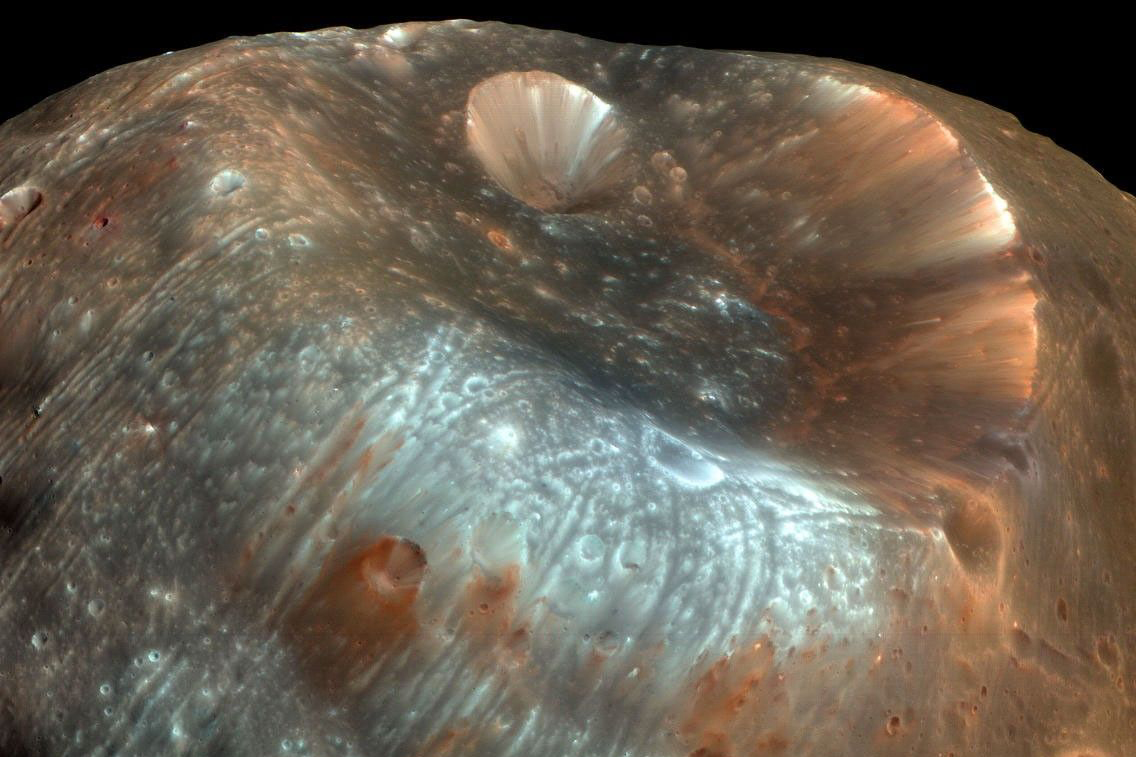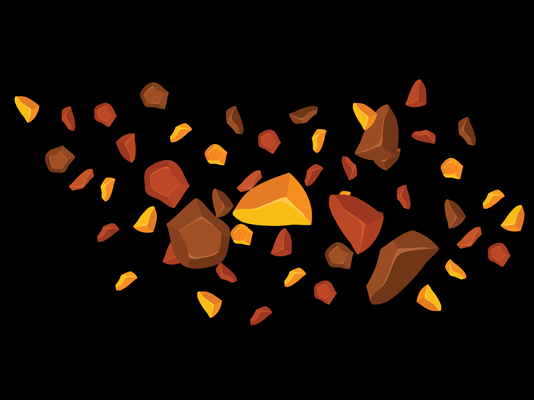Phobos, a moon of Mars

Phobos from Mars Reconnaissance Orbiter, taken in March 2008. Image credit: NASA/JPL-Caltech/University of Arizona
5,826 miles
14 miles
Phobos is the larger and closer of Mars’s two moons, though at just 27 kilometres across at its widest point, “large” is a relative term. Discovered on 18th August 1877 by American astronomer Asaph Hall, Phobos orbits only about 6,000 kilometres above the Martian surface, closer than any other moon in the Solar System to its planet.
Phobos completes one orbit in just 7 hours and 39 minutes, which is faster than Mars rotates. This means it rises in the west and sets in the east, making two orbits in the sky for every Martian day. Phobos won't be around forever: it is gradually spiralling inwards at a rate of about 1.8 centimetres per year and will either crash into Mars or break apart into a ring system in 30 to 50 million years.
The surface of Phobos is dark and heavily cratered, coated with a layer of dust and loose rock called regolith. The most prominent feature is Stickney Crater, a giant impact scar 9 kilometres wide, nearly half the moon’s diameter. This crater, along with grooves etched across the surface, gives Phobos a battered appearance. Scientists debate whether these grooves were caused by impacts, structural stresses from Mars’s gravity, or ejecta from the Stickney impact.

Phobos is thought to be made of carbon-rich rock, similar to a type of asteroid known as a C-type. It may have formed as a captured asteroid from the outer asteroid belt, or from debris thrown into Mars’s orbit after a massive impact.
Phobos is the target of the Martian Moons eXploration (MMX) mission, led by the Japan Aerospace Exploration Agency (JAXA) and planned for launch in 2026. MMX will orbit Mars and its moons, studying both Phobos and Deimos in detail. The highlight of the mission will be a landing on Phobos to collect samples from its surface, which will then be returned to Earth, potentially as early as 2031. These samples could reveal whether Phobos is a captured asteroid or formed from Mars itself, shedding light on the moon’s origins and the early history of the Solar System.
In Greek mythology, Phobos is the personification of fear or panic, and the twin brother of Deimos. The sons of Ares (the Greek god of war, known as Mars in Roman mythology) and Aphrodite (Venus), Phobos and Deimos accompanied their father into battle. The names were chosen to reflect Mars’s status as the god of war. What better companions for war than fear and terror?
The name was given by Asaph Hall, following the classical tradition of naming celestial bodies after figures from ancient mythology.






